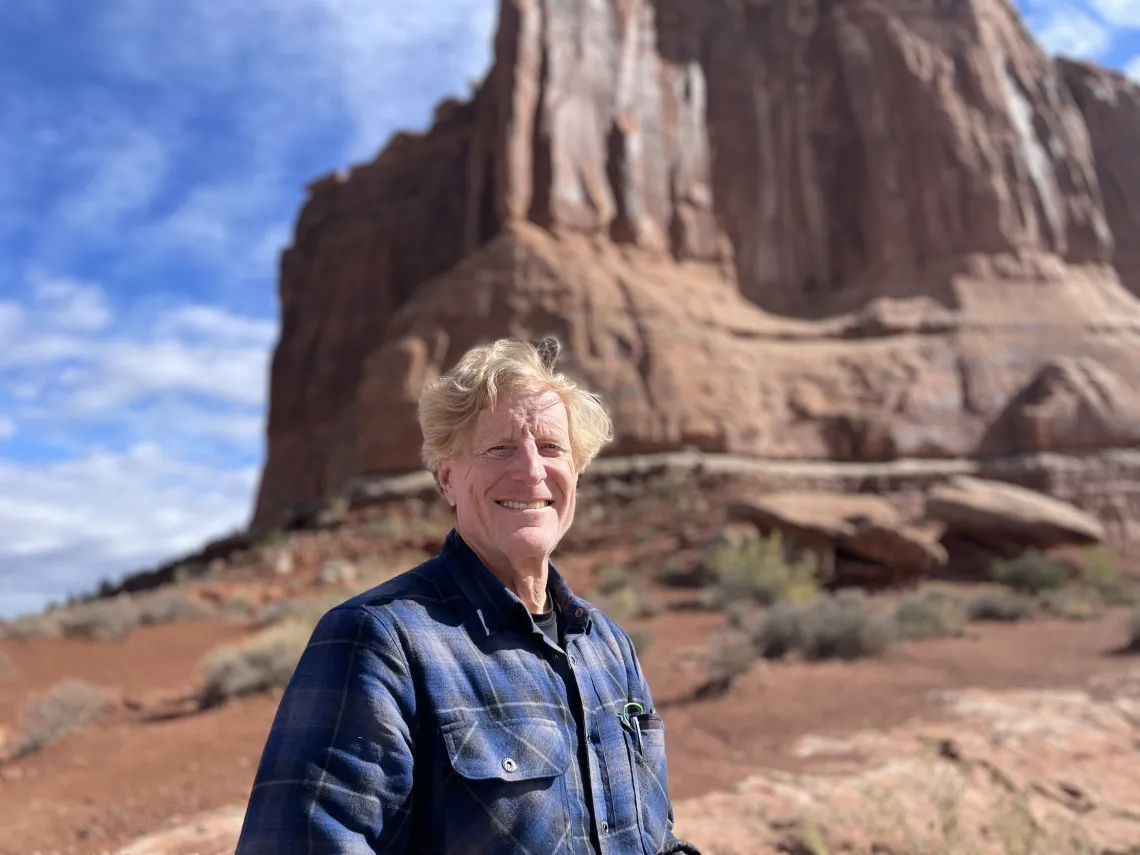Historical Lens: A Passion for Astro-Imaging

For my part I know nothing with any certainty, but the sight of the stars makes me dream.
(Vincent Van Gogh)
Since the beginning of time, humankind has been gazing at the stars either for direction or with a sense of wonder. Thousands of years later, astronomy—and astro-imaging—are popular pastimes. For Wyant College of Optical Sciences (OSC) graduate John Hayes (PhD 1984), astro-imaging is the perfect hobby—combining his love of optics with the thrill of capturing some of the universe’s most elusive cosmic treasures.
For most of us, the sight of the Moon is something we take for granted, but telescopic views of it can often shift our perspective—giving us a greater sense of how surreal it is that this other world is constantly orbiting our own; that humans have actually walked on it; and that we occupy such a small space in a very vast universe. The first time John saw the Moon through “a wobbly 3-inch reflector his parents had given him,” he was hooked. “It was beyond amazing to see the cratered surface of the Moon magnified.”
Years later, John’s passion for telescopes, photography and the wonders of the night sky has led him to create stunning, extremely high-resolution, images of deep-sky objects. His meticulous attention to detail and unending persistence has been enjoyed by many and rewarded by NASA—his image of M27, the Dumbbell Nebula, was chosen as their Astronomy Picture of the Day (APOD) on November 2, 2016. (Incidentally, this just happened to coincide with John’s birthday!)
The data for this image was taken with my 14-inch telescope outside of my airplane hangar in Bend, Oregon, on a couple of sparkling summer nights in July—right before I was to leave on a trip. I wasn’t sure of what target to shoot, so I picked the Dumbbell Nebula simply because it is very bright—the second brightest planetary nebula in the sky—and I felt I could grab enough data for a finished image in just a few nights.
When I returned from my trip, I tried to process the data but just couldn’t get it right. After about 10 unsuccessful tries at processing, I set the project aside. After coming back to it in October, I hit on a processing method that worked and I knew that I had a pretty amazing result, so decided to submit it to NASA for consideration as one of their pictures of the day. APODs are very hard to win—with the best images collected from all over the world from both professional and amateur imagers—so you can imagine my surprise when the clock ticked just past midnight on my birthday, and my wife, Jane, said, ‘Hey, look at that. Your image is the APOD today!’
Look for John’s winning image—along with other amazing favorites—in his video tour of the universe, Looking Up.
Always willing to share his love for the hobby and insights into his successes (and failures), John has written a comprehensive accounting of his journey from the wobbly 3-inch reflector telescope of his childhood—under the not-so-ideal skies of Michigan—to his plan to place his latest 20-inch scope at an observatory just south of the Giant Magellan Telescope (GMT) site in Chile—a location with over 300 clear nights a year. In A Passion for Astro-Imaging, John describes his equipment in detail; reveals his key techniques behind the magic of processing the data; and talks about the significant and very specific technical challenges—all in the hope his story “will pique some interest in the hobby of astro-imaging.”
READ JOHN'S ARTICLE "A PASSION FOR ASTRO-IMAGING"
Want more information or a more detailed explanation of the equipment and/or techniques described? John has graciously agreed to answer any questions you might have. Questions can be emailed to Tammy Orr at torr@optics.arizona.edu.
Want to see more of John’s incredible images? Check out John’s Astrobin page at https://www.astrobin.com/users/jhayes_tucson/. The story of his new 20-inch scope (including photos) can be found at https://www.astrobin.com/dlko5b/E/?nc=user.
